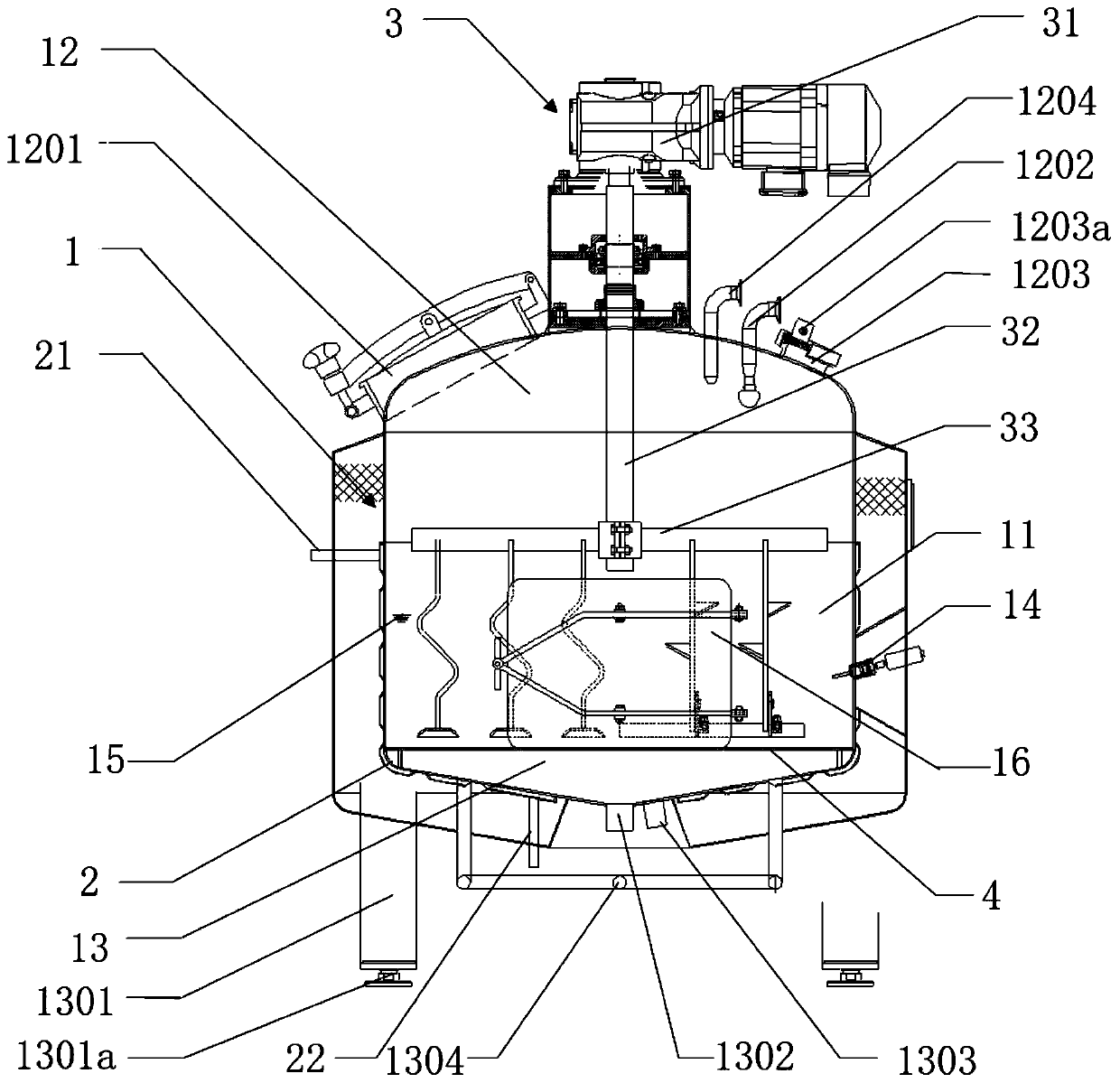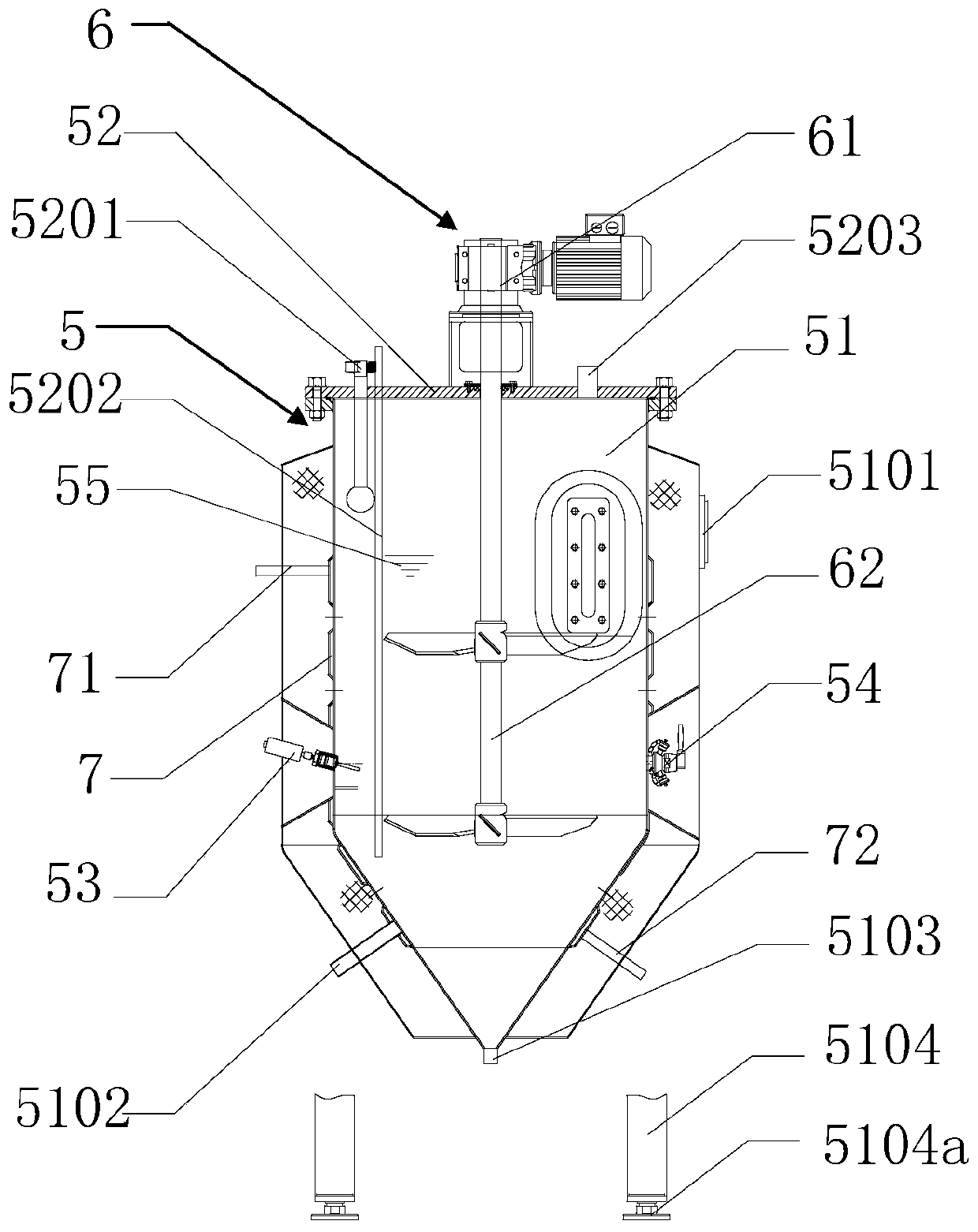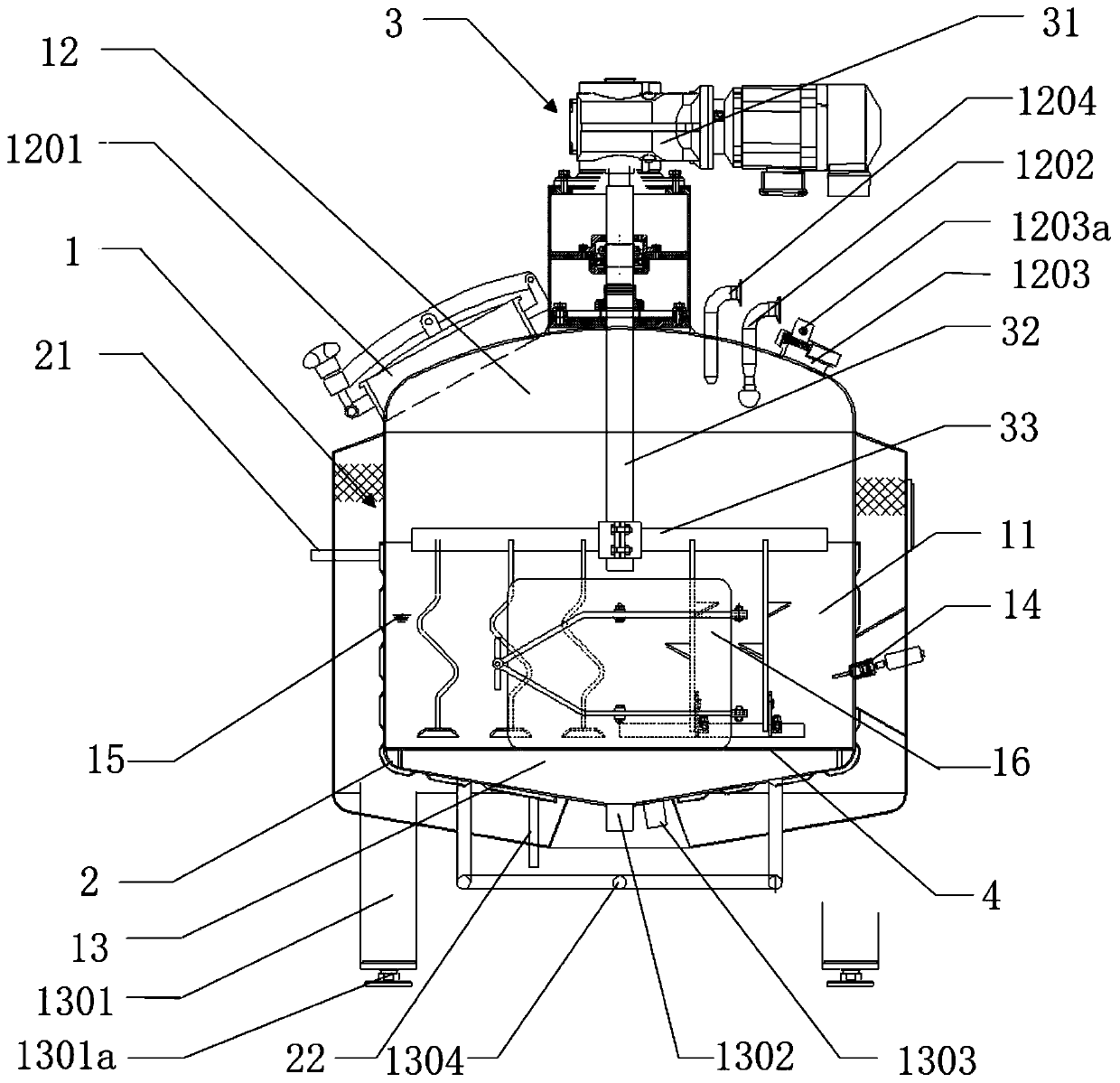Rice baijiu manufacturing technology
A production process and rice-flavored technology, which is applied in the field of rice-flavored liquor production technology, can solve the problems of complex realization process, high labor intensity, and high energy consumption, so as to reduce work intensity and energy consumption, simplify the process realization process, Realize the effect of fully automatic control
- Summary
- Abstract
- Description
- Claims
- Application Information
AI Technical Summary
Problems solved by technology
Method used
Image
Examples
Embodiment 1
[0078] The production technology of rice-flavored liquor of the present embodiment comprises the following steps:
[0079] (1) Feeding: After the closed pot body 1 and related pipelines are effectively cleaned by the first CIP cleaning device 1202, 50KG finished rice is dropped into the closed pot body 1 from the pressure manhole door 1201;
[0080] (2) Rice washing once: through the first nozzle 1204, the brewing water is evenly sprayed on the rice layer, and the stirring device 2 is turned on at the same time to stir the rice layer. Discharge or re-inject into the closed pot body 1 through the water pump from the first material outlet 1303 to circulate and clean for 10 minutes;
[0081] (3) Rice soaking: after washing the rice, close the first sewage outlet 1302, the first material outlet 1303 and the stirring device 2, continue to add brewing water through the first nozzle 1204, stop until the water surface is 10cm higher than the rice surface, and soak for 8 hours;
[008...
Embodiment 2
[0095] The production technology of rice-flavored liquor of the present embodiment comprises the following steps:
[0096](1) Feeding: After the closed pot body 1 and related pipelines are effectively cleaned by the first CIP cleaning device 1202, 100KG finished rice is dropped into the closed pot body 1 from the pressure manhole door 1201;
[0097] (2) Rice washing once: through the first nozzle 1204, the brewing water is evenly sprayed on the rice layer, and the stirring device 2 is turned on at the same time to stir the rice layer. Discharge or re-inject into the closed pot body 1 through the water pump from the first material outlet 1303 to circulate and clean for 10 minutes;
[0098] (3) Rice soaking: after washing the rice, close the first sewage outlet 1302, the first material outlet 1303 and the stirring device 2, continue to add brewing water through the first nozzle 1204, stop until the water surface is 10cm higher than the rice surface, and soak for 8 hours;
[009...
Embodiment 3
[0112] The production technology of rice-flavored liquor of the present embodiment comprises the following steps:
[0113] (1) Feeding: After the closed pot body 1 and related pipelines are effectively cleaned by the first CIP cleaning device 1202, 150KG finished rice is dropped into the closed pot body 1 from the pressure manhole door 1201;
[0114] (2) Rice washing once: through the first nozzle 1204, the brewing water is evenly sprayed on the rice layer, and the stirring device 2 is turned on at the same time to stir the rice layer. Discharge or re-inject into the closed pot body 1 through the water pump from the first material outlet 1303 to circulate and clean for 10 minutes;
[0115] (3) Rice soaking: after washing the rice, close the first sewage outlet 1302, the first material outlet 1303 and the stirring device 2, continue to add brewing water through the first nozzle 1204, stop until the water surface is 10cm higher than the rice surface, and soak for 8 hours;
[01...
PUM
 Login to View More
Login to View More Abstract
Description
Claims
Application Information
 Login to View More
Login to View More - R&D
- Intellectual Property
- Life Sciences
- Materials
- Tech Scout
- Unparalleled Data Quality
- Higher Quality Content
- 60% Fewer Hallucinations
Browse by: Latest US Patents, China's latest patents, Technical Efficacy Thesaurus, Application Domain, Technology Topic, Popular Technical Reports.
© 2025 PatSnap. All rights reserved.Legal|Privacy policy|Modern Slavery Act Transparency Statement|Sitemap|About US| Contact US: help@patsnap.com



